This Lemon Jam Recipe comes straight from the pages of Nana Ling's handwritten WWII era recipe book.
It relies on a traditional jam-making process, however don't let that scare you away. It worked for me on my first attempt and I've added step-by-step instructions to help you find success too.
It does require you to soak the lemon slices overnight, but with a little planning it's an easy-to-follow recipe that produces an absolutely lovely Lemon Jam.
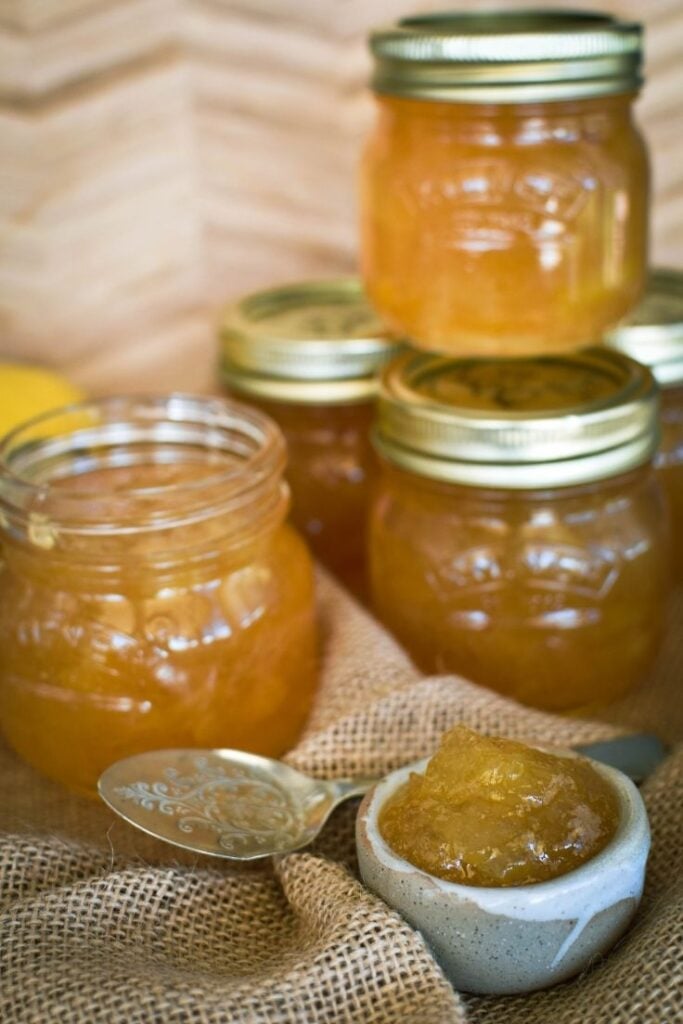
What you'll need to make Lemon Jam
This recipe produces about 1,250ml of jam, so sterilise enough jars to hold this amount of jam.
If you have a dishwasher, you can simply wash the jars on the hottest cycle to sterilise.
Next, the ingredients. You'll need:
- 3 medium lemons
- 1 kg sugar
- bicarb soda.
You'll also be using water during a soaking process and one litre of water will be added during the actual jam-making process.
The precise ingredients and measurements can all be found at the bottom of the post, so continue scrolling through to the end to get those details.
Making the jam
The first step of the process involves washing the lemons and then slicing them thinly.
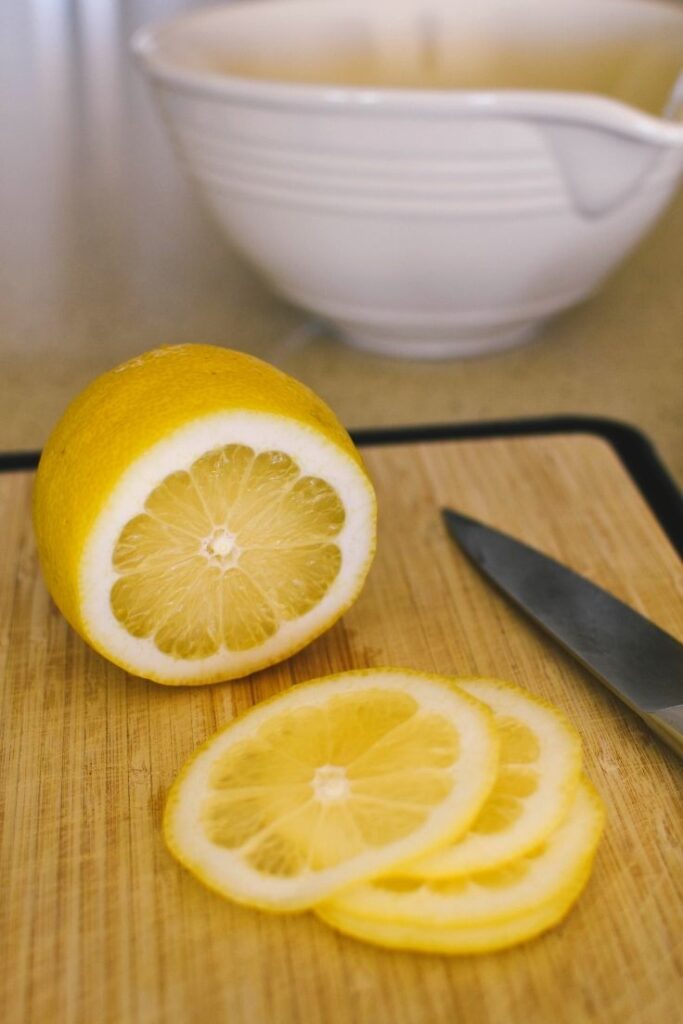
The lemon slices are then soaked in water overnight.
The next day, the liquid is strained off and then the lemon slices are covered in fresh water in a saucepan. The mixture is heated on the stove and once it boils, the bicarb soda is added. The mixture is boiled for 15 minutes and then the liquid is again strained away.
Once the lemons are cool again, one litre of water is added and the lemons are boiled, uncovered for 15-20 minutes.
Now add half the sugar and bring to a steady simmer. Simmer uncovered for 50-60 minutes, stirring from time to time.
Finally, add the remaining sugar and boil for 5-10 minutes or until the mixture reaches setting point.
How do you tell if your Lemon Jam is at setting point?
At first, the jam is a watery consistency. When it’s ready to take off the stove, it will be a little thicker and more "bubbly" as it boils. It will stick to the pan very slightly as you stir the mixture.
For more guidance on the method, check out this post on "How to tell when jam is set" and continue reading through to the recipe card at the end of this post.
Enjoying your Lemon Jam in the weeks and months ahead
Once your jam is ready, pour the hot mixture straight into the sterilised jars and seal with the lid.
Take care when working with the hot jam mixture.
Allow to cool and then store in the pantry or fridge.
In terms of the length of time your jam will last unopened in the pantry, this depends on the jars you've used, the climate, the fruit and other factors.
Sugar is a preservative and if you use a hot water bath and jars with a good seal, jams can last up to 12 months in a cool, dark storage place.
I prefer to store homemade jams only a month or so in the pantry, or a few months in the fridge.
You can also try freezing your jam for up to six months.
Please always use your own judgment and senses in working out whether the jam is still okay to eat!
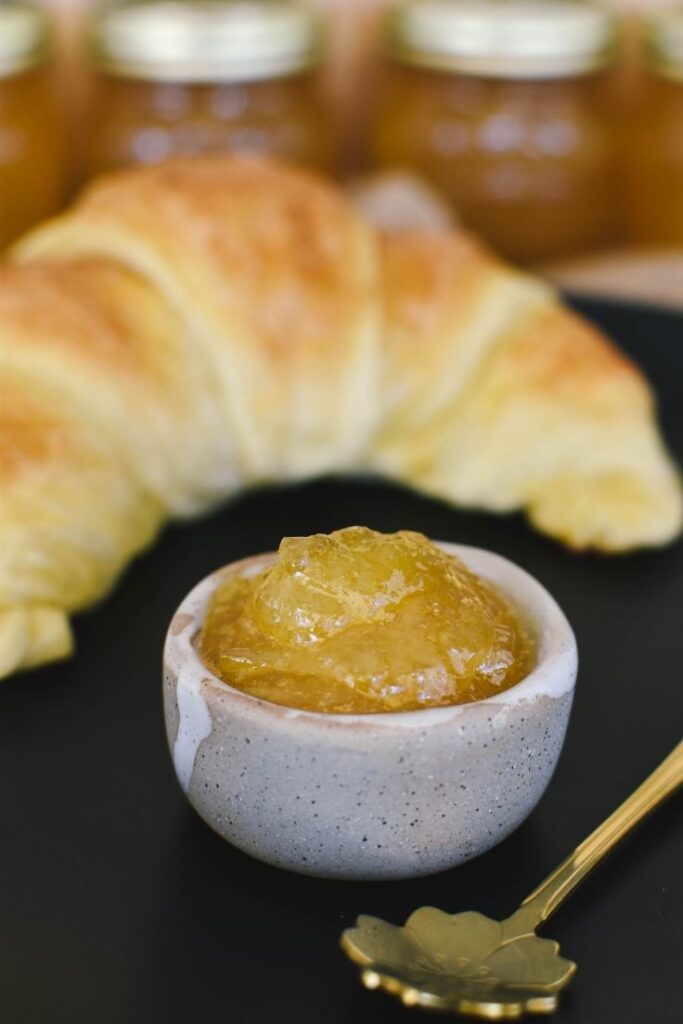
And now for the best part: enjoying your jam.
Scones, croissants, toast – what's your favourite way to enjoy this lovely Lemon Jam?
Nana Ling's original Lemon Jam Recipe
Keep scrolling to the recipe card at the bottom of this post for the tested and tweaked version of this recipe.
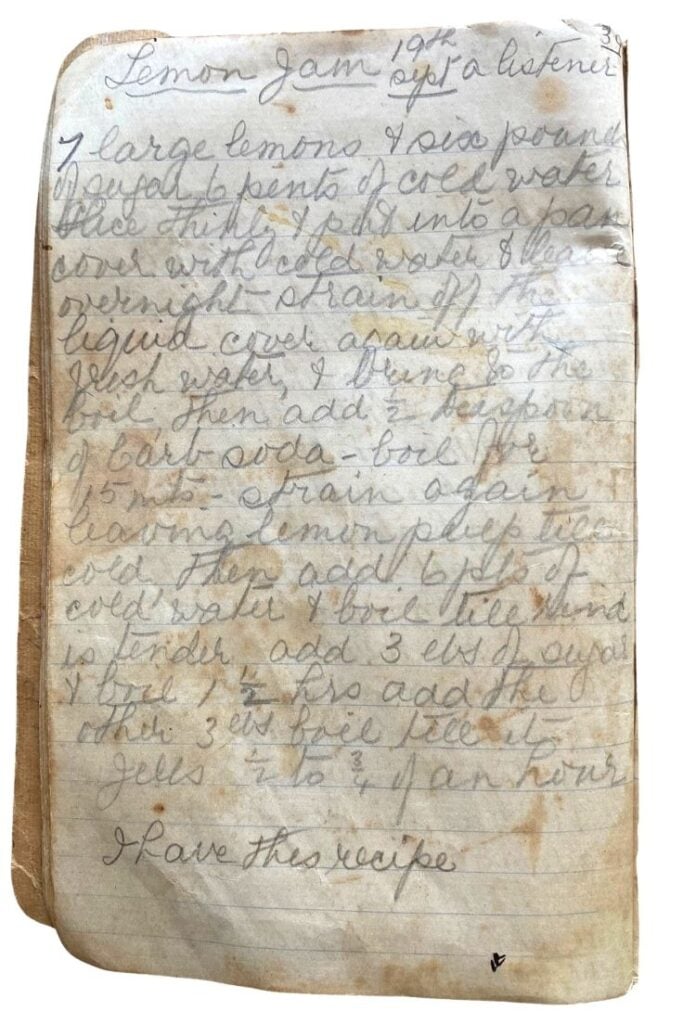
Love making jam?
Check out the strawberry, fig, peach, rosella, mandarin and tomato jam recipes.
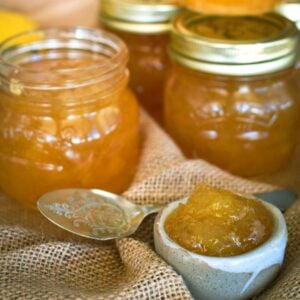
Lemon Jam
Ingredients
- 3 medium lemons
- 1 kg castor sugar
- ½ teaspoon bicarb soda
- 1 litre water
- water (additional water for soaking lemons)
Instructions
- Wash lemons and cut off the very top and bottom ends of the lemon.
- Slice lemons thinly (removing any seeds as you go), cover with enough cold water to completely immerse the lemons and leave overnight.
- The next day, strain off the liquid and place lemons in a large saucepan. Cover with enough cold water to completely immerse the lemons and bring to the boil. Add the bicarb soda and boil for 15 minutes.
- Allow to cool a little and then strain off the liquid again. Leave lemons to cool completely.
- Add the one litre of water to the lemons and boil uncovered for 15-20 minutes.
- Add half of the sugar, stir over low-medium to dissolve the sugar. Bring to a steady simmer and simmer for 50-60 minutes, stirring from time to time.
- Add the other half of the sugar and bring to the boil. Continue to stir every couple of minutes for 5-10 minutes or until the mixture reaches setting point.
- Pour hot mixture into sterilised jars. Allow to cool a little and then secure lid.

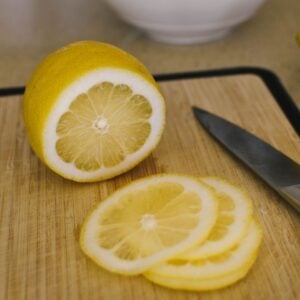
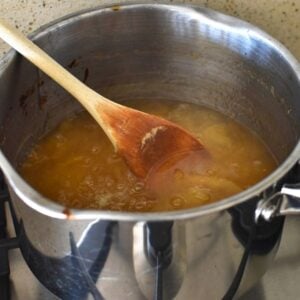
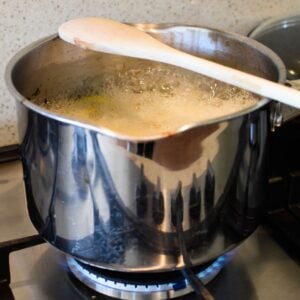
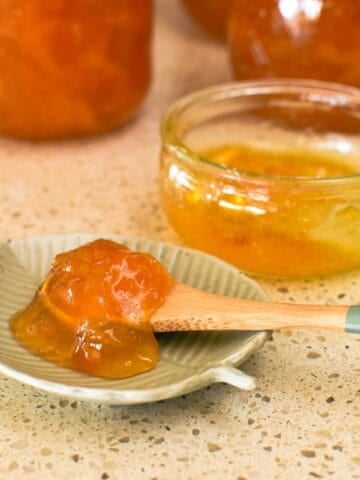
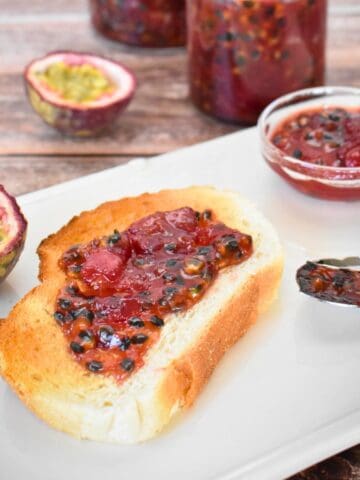
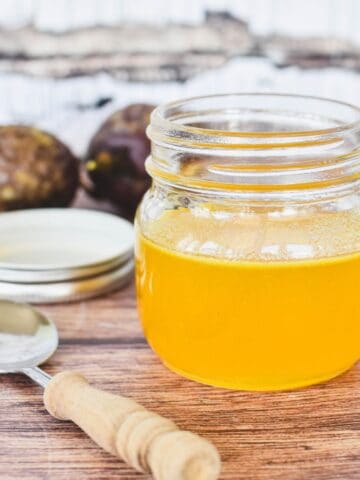
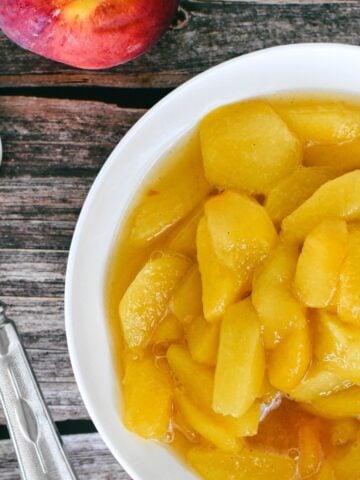
Carolyn
Capital letters denotes SHOUTING, I wonder if these people would be more polite if they came face to face with you, there are some really aggressive people out there
Helen
The use of bicarb in your lemon jam recipe is really interesting and Pam Corbin (Pam the Jam as she is known online and in her books) and Dan Lepard 2 of the judges at the World Marmalade Awards held in the UK have published recipes using it in their lemon marmalade. The rationale for this is that the bicarb avoids a “split” gel which can resemble wallpaper paste (although does not affect the taste). This split is caused by the high acid content found in lemons which differs from say Seville oranges. I’ve experienced this split in my own lemon marmalade and have wondered about using bicarb. It’s such a beautiful marmalade to make. I’m sure there’s other ways to avoid the gel splitting as many people make it and it looks lovely and no particular additives are mentioned. I wonder if cooks back in the day used all the water changes to try to reduce acidity? As a marmalade and jam maker I really enjoyed your post of how preserves used to be made.
Libby Hakim
Hi Helen. Thank you – and I also enjoyed reading your thoughts about the use of bicarb. It really is an interesting process and I am trying to learn more with each recipe. I'll also look up the two people you've mentioned. Happy cooking!
Susan
I’m an avid jam maker and also am old enough to remember that way back around the war and 50s etc many folk were adding bicarbonate of soda to their green veg to keep them green when boiling them. That worked - but it also killed all the vitamin C ! Which is why it is no longer used. I don’t think using it in this recipe is a good idea for the same reasons..but as it’s cooked for a while to form jam..I really don’t know. Personally I’ve never used it in james, marmalades etc and they have all turned out fine!
Thanks for this recipe, and I love seeing it all handwritten out!
Libby Hakim
Hi Susan. Thanks so much for your comments. I've done some quick research and it's an interesting topic, for sure! I didn't know that bicarb soda was used when boiling veges at one time. With the jams, it seems it's also added to reduce the amount of sugar required. I'm going to do some more research here and add some comments in the post. Thanks again - part of this blog is me learning too, so I always love to hear from people 🙂 Libby x
Sue
Not good, after all the time involved (not 1 day (soaking & then 40 mins as stated)
Step 3 Boil for 15 mins, Step 5 boil for 15-20 mins, Step 6 Simmer for 50-60 mins, Step 7 Boil for 5-10 mins - This equals more than 40 mins!!!!)
At the end of all this time I was left with 4 jars of sugar syrup (crystallized) that didn't even taste like lemon. Recommend don't try this recipe.
Libby Hakim
Hi Sue. Sorry you had a bad experience with this recipe. I got a great result on my first attempt but I'll flag it to test again and see where things might have gone wrong for you. Libby
amanda
@Libby Hakim, I can confirm that too, I used the exact measurements but in the end I put half the sugar in and left the other half out because It didn't need it, and even then it was too much sugar for the amount of lemon, I'd try again but with twice as much lemon and half the sugar, or even lime instead of lemon, because limes have a stronger fragrance. Another thing, not so thin slices will also give better results.
monika
But HOW MUCH bicarb of soda?
Libby Hakim
"The precise ingredients and measurements can all be found at the bottom of the post, so continue scrolling through to the end to get those details."